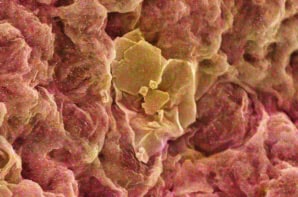Available to watch now, JPhys Materials explore some of the key magnetic imaging technologies for the upcoming decade
Want to learn more on this subject?

With a rapidly growing interest in magnetic materials for unconventional computing, data storage, and sensor applications, active research is needed not only on material synthesis but also characterization of their properties. In addition to structural and integral magnetic characterizations, imaging of magnetization patterns, current distributions and magnetic fields at nano- and microscale is of major importance to understand the material responses and qualify them for specific applications.
In this webinar, four experts will present on some of the key magnetic imaging technologies for the upcoming decade:
- Scanning SQUID microscopy
- Nanoscale magnetic resonance imaging
- Coherent X-ray magnetic imaging
- Scanning electron microscopy with polarization analysis
The webinar will run for two hours, with time for audience Q&A after each speaker.
Those interested in exploring this topic further are encouraged to read the 2024 roadmap on magnetic microscopy techniques and their applications in materials science, a single access point of information for experts in the field as well as the young generation of students, available open access in Journal of Physics: Materials.
Want to learn more on this subject?

Katja Nowack received her PhD in physics at Delft University of Technology in 2009, focussing on controlling and reading out the spin of single electrons in electrostatically defined quantum dots for spin-based quantum information processing. During her postdoc at Stanford University, she shifted to low-temperature magnetic imaging using scanning superconducting quantum interference devices (SQUIDs). In 2015, she joined the Department of Physics at Cornell University, where her lab develops magnetic imaging techniques to study quantum materials and devices, including topological material, unconventional superconductors and superconducting circuits.
Christian Degen joined ETH Zurich in 2011 after positions at MIT, Leiden University and IBM Research, Almaden. His background includes a PhD in magnetic resonance (Beat Meier) and postdoctoral training in scanning force microscopy (Dan Rugar). Since 2009, he has led a research group on quantum sensing and nanomechanics. He is a co-founder of the microscopy start-up QZabre.
Claire Donnelly. Following her MPhys at the University of Oxford, Claire went to Switzerland to carry out her PhD studies at the Paul Scherrer Institute and ETH Zurich. She was awarded her PhD in 2017 for her work on 3D systems, in which she developed X-ray magnetic tomography, work that was recognized by a number of awards. After a postdoc at the ETH Zurich, she moved to the University of Cambridge and the Cavendish Laboratory as a Leverhulme Early Career Research Fellow, where she focused on the behaviour of three-dimensional magnetic nanostructures. Since September 2021 she is a Lise Meitner Group Leader of Spin3D at the Max Planck Institute for Chemical Physics of Solids in Dresden, Germany. Her group focuses on the physics of three-dimensional magnetic and superconducting systems, and developing synchrotron X-ray-based methods to resolve their structure in 3D.
Mathias Kläui is professor of physics at Johannes Gutenberg-University Mainz and adjunct professor at the Norwegian University of Science and Technology. He received his PhD at the University of Cambridge, after which he joined the IBM Research Labs in Zürich. He was a junior group leader at the University of Konstanz and then became associate professor in a joint appointment between the EPFL and the PSI in Switzerland before moving to Mainz. He has published more than 400 articles and given more than 250 invited talks, is a Fellow of the IEEE, IOP and APS and has been awarded a number of prizes and scholarships.
JPhys Materials is a new open access journal highlighting the most significant and exciting advances in materials science.
Editor-in-chief: Stephan Roche is ICREA professor at the Catalan Institute of Nanosciences and Nanotechnology (ICN2) and the Barcelona Institute of Science and Technology.




